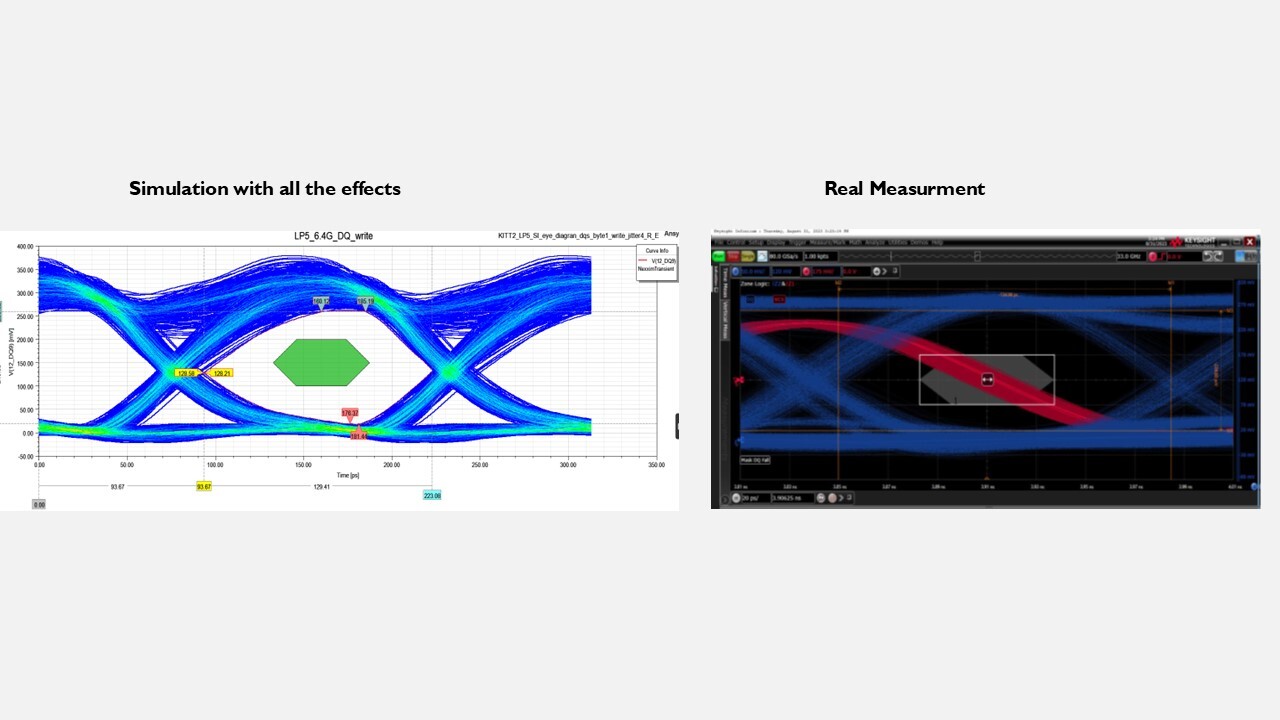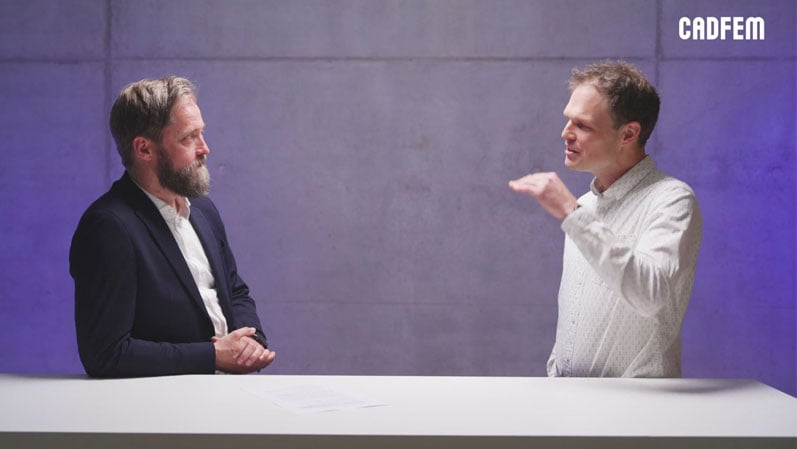How Engineers are enabling the Quantum Computing by Simulation
Alexander Shalaby
20.06.2025
Tech Article 25/06 | Ansys simulation tools at the forefront of the next computing revolution
Since the mid-20th century, the global economy has relied on two key drivers: energy and computing power. Lots has been said about energy and green energy transition so let us focus here on the computing power aspect. Computing is nowadays ubiquitous – we have it in our smart phones, watches, internet of things. And for us simulation engineers, without computing powers there will be no simulation.
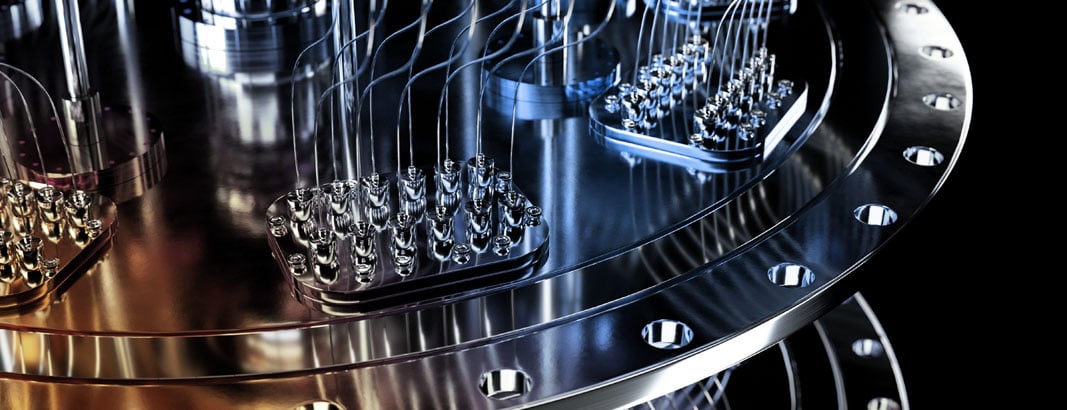
Illustration of a quantum computer | © Adobe Stock
From Moore’s Law to Quantum Computing
Computing power depends on a concept called Moore’s law. It is an empirical law and not a physical law. Mr. Moore observed that computing power doubles every two years while the price halves every two years. In other words, the increase in computing power is exponential. The simple explanation for that is computing power depends on tiny planar switches called transistors. More transistors = more computing power and less power consumption. So, how much longer will Moore’s Law last? As we approach 1 nm, quantum effects start to kick in and we cannot shrink the transistors further. As Mr. Moore himself says: No Exponential is Forever: But “Forever” Can Be Delayed!
To keep adding transistors and drive economic growth, engineers proposed two solutions: 3D ICs and quantum computers. 3D ICs stack transistors vertically, like multi-story buildings, allowing more components in the same area. This could extend Moore’s Law until at least 2036, though it introduces challenges like mechanical stress and thermal issues – making early use of multiphysics simulations essential. Another path is to embrace quantum effects by using qubits, which can represent 0 and 1 simultaneously. Quantum computing requires extreme conditions, like millikelvin temperatures, so the main challenge lies in engineering rather than physics. Still, applying quantum principles remains highly complex and unintuitive.
Quantum chips act as co-processors, similar to GPUs, and require a classical computer to function. So, a quantum computer is essentially a classical machine with a quantum coprocessor. While classical systems are fine for everyday tasks, they fall short in areas involving massive parallelism – like brute-force decryption, DNA sequencing, or drug discovery – where quantum computers can deliver results in seconds.
Another key application is material engineering. Instead of adapting existing materials, engineers could define ideal properties, and a quantum computer would simulate or synthesize suitable molecules – even those not found in nature – unlocking entirely new materials.
With these transformative possibilities ahead, the next chapters will explore the technical details.

Exponential increase in computing power over the past years based in Moore’s Law | © CADFEM Germany GmbH
The physics of quantum computing
The crux of photonic quantum computing lies in its size – its inherently small. Now, exactly what “small” means depends on how each qubit is made. But, essentially, its small enough that the world of classical physics no longer applies and we need to use quantum mechanics to describe the system. At this scale, the information holders (the “qubits”) can be manipulated to exhibit specific properties that are only possible in inherently quantum systems. Two of the most fundamental effects which are important in quantum computers are: superposition and entanglement. Superposition is the concept that a qubit can be in either the zero state, the one state, or an “inbetween” state.
In other words, unlike classical bits, quantum bits can be non-deterministic. Entanglement is a phenomenon where multiple qubits are connected in such a way that they cannot be described individually, but only as a single collective state. Measuring one qubit will affect the state of another. While these two concepts form the foundation of quantum computing, actually using these physical principles for meaningful computation involves significant complexity beyond what is described here. Turning to more practical (and classical) aspects, we must find methods to manipulate the qubits themselves. There are many different types of qubits, such as superconducting Josephson junctions, trapped ions, photons, and more.
For each type, the manipulation method depends on the chosen technology. For example, in the case of trapped ions, electric circuits are used to control potential wells that move ions into interaction, allowing them to become entangled. Although the computer itself operates quantum mechanically, the control system relies on established RF components from traditional fields – these will be discussed in the next section. Additionally, regardless of the specific architecture, communication between local quantum systems is essential, and photons are ideally suited for this, as will be covered in the next paragraph.

A „qubit“ is the quantum analogue of the classical “bit”. While a “bit” can only be either zero or one, a “qubit” can be in a complex superposition of these two states. | © Adobe Stock
RF: A classical engineering task revitalized in a quantum age
High-frequency technology is one of the relatively oldest disciplines in electrical engineering and began in the 19th century. Subsequently, technologies developed from radar, printed circuit boards and integrated circuits to waveguides. Compared to microstrip transmission lines, co-planar waveguides (CPW) have low radiation losses and easy access to ground, thus avoiding vias. In the past, these interconnects were designed using experimental data and empirical formulas.
Today, full wave simulators like Ansys HFSS (High Frequency Structure Simulator) are available enabling engineers to very accurately predict the performance without prototyping iterations. HFSS was so accurate due to the adaptive mesh refinement, that it became the industry golden standard. Especially, with CPW interconnects where the field is confined between narrow slots, higher meshing accuracy is needed. CPW are now being used in almost all implementations of quantum computers. Hence being able to properly and accurately design CPW interconnects is at the very heart of the design process of quantum computers. HFSS is a suite of multiple sub tools such as TRL. It uses empirical formulas to predict a good starting point for the design.

TRL tool within HFSS & CPW TL with extra ground plane (stitching Vias are needed) | © CADFEM Germany GmbH
Ansys Fluent GPU Performance Testing – Use Case
Ob im Maschinenbau, in der Luftfahrt oder bei der Produktentwicklung: Strömungssimulationen sind für präzise und schnelle Entwicklungsprozesse unerlässlich. Doch wie unterscheiden sich CPU- und GPU-basierte Simulationen, und was sind die wichtigsten Kriterien bei der Hardwarebewertung? Dieser Beitrag beleuchtet grundlegende Unterschiede, Leistungsmetriken und die Anwendungsmöglichkeiten von GPU- und CPU-Setups für Ihre CFD-Projekte.t
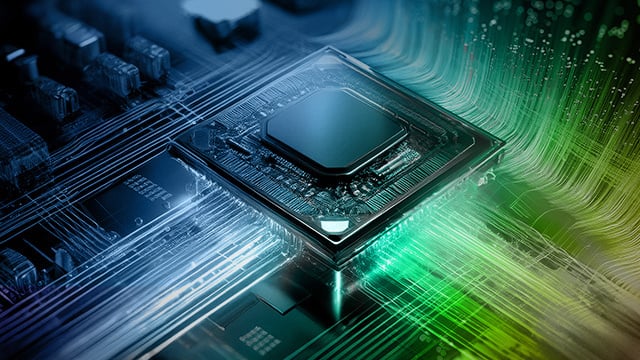
The starting values from the TRL tool are transferred to the Fullwave FEM (finite element method) solver in HFSS. Since these values are based on empirical formulas, further optimization is required to achieve the target characteristic impedance, typically 50 ohms. The built-in global optimizer is highly efficient and completes this in about 3 minutes on a 4-core office laptop. Thanks to HFSS’s dense adaptive mesh, current field distribution show smooth transitions, indicating high mesh quality. These field plots also serve as sanity checks to verify correct mode excitation. The S-parameters reveal a high dynamic range between S11 (reflection) and S12 (transmission), which further demonstrates HFSS’s accuracy.

Co-Planar Waveguide - S11 (Reflection), S12 (transmission) & Current Density | © CADFEM Germany GmbH
When simulating CPW, it’s important to switch the characteristic impedance mode from Zpi to Zpv at the Port Definition in HFSS. Transitions from CPW - e.g., to chips or differently sized structures - often require bond wires, which add significant inductance by crowding current flow. Optimetrics can be used to sweep key parameters: bond wire diameter, length, number, and spacing. If these wires end on pads, parasitic capacitance is introduced. This must be co-designed with the wire inductance to avoid resonance peaks in the transmission. HFSS offers a range of tools for accurately designing CPW interconnects and transitions – critical for reliable quantum computing, where even slight signal or phase distortions can increase error rates.

Training Tip
RF Simulation with Ansys HFSS
This course lets you understand the EM behaviour of your product at a very early development stage. With this knowledge, you can optimize the performance and see if you meet specs, hence avoiding costly reworks and waste of time.
Photonics: entangled qubits at the speed of light
What are the challenges of using photonics in quantum computing? Photonics plays a critical role in many quantum computing systems. This role falls into one of two categories: using photonics as the intrinsic qubits of a quantum computer, or enabling networking between quantum computers based on other qubit modalities (trapped ions, Josephson junctions, etc.). In quantum networking, photonics plays a vital role in linking quantum processors across long distances – a key requirement for distributed quantum systems. For example, in ion trap quantum computers, ions act as stationary qubits while photons function as flying qubits, transmitting quantum information between nodes.
Photonic interconnects enable entanglement distribution and quantum teleportation – both essential for building quantum networks and ultimately a quantum internet. Photonics is critical for scaling quantum systems: since many applications may require tens of thousands of logical qubits (and millions of physical qubits), scaling out is essential, as practical constraints like cooler size would otherwise limit such systems. Ansys Lumerical software supports the design of photonic interfaces by simulating components such as optical cavities, fibre couplers, and others essential for efficient light-matter interaction and minimal signal loss during entangled data transmission.
Beyond networking, photons themselves can serve as qubits in photonic quantum computers, where information is encoded in properties like polarization, time-bin, or path. Photonic qubits are naturally resilient to environmental noise and can be manipulated using linear optical elements such as phase shifters and interferometers. Lumerical enables precise modeling and design of such components, allowing researchers to simulate quantum gates and circuits prior to fabrication. Additionally, circuit-level tools like Lumerical INTERCONNECT and qINTERCONNECT help designers analyze system performance (e.g., fidelity) using realistic models that include effects like manufacturing variability and loss.

Lumerical-Simulation to evaluate the charge distribution at a phase shifter | © CADFEM Germany GmbH
A superposition of possibilities
As photonic quantum computing advances, simulation tools like Ansys Lumerical are essential for optimizing performance, lowering development costs, and pushing the frontiers of quantum information science. Lumerical excels in photonic design, crucial for developing quantum communication and sensing technologies, while Ansys HFSS provides high-frequency electromagnetic simulation essential for designing quantum hardware such as superconducting qubits and resonators. If you want to learn how above all WHY to switch the characteristic impedance or how to perform parametric simulations and analyze their effect on reflection (S11) and transmission (S12), I recommend the seminar RF simulation with Ansys HFSS.

Effect of the characteristic impedance on S11 (reflection) | © CADFEM Germany GmbH
In conclusion, quantum computing stands at the frontier of technological innovation, promising transformative capabilities across industries. Tools like Lumerical and HFSS play a pivotal role in this evolution by enabling precise modelling and simulation of quantum devices and electromagnetic environments. Together, these tools bridge the gap between theoretical quantum mechanics and practical engineering, accelerating the path toward scalable, real-world quantum systems. As research and development continue to advance, the synergy between quantum computing and sophisticated simulation platforms will be instrumental in unlocking the full potential of this revolutionary field.
Take a look at CADFEM's Let’s Simulate to see how experts exchange ideas on how to simulate quantum computation technology using HFSS and Lumerical. And when you watch experts at work, you usually get tips and tricks that help you in other areas as well... :-)
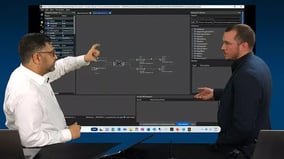
Let's Simulate – Knowledge Building Blocks for the Production of Quantum Computers
In this season, experts Alexander Shalaby and Ph.D. Steven Jones dive into the intersection of quantum computing and photonics. Discover how advancements in RF and photonics influence modern simulation techniques and how quantum effects come into play.




